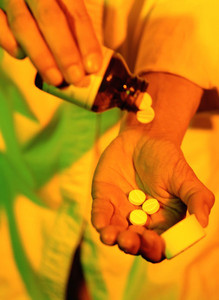Are generic medicines for the control of epileptic seizures bioequivalent to their brand-name counterparts? Steven Karceski [1] has recently reviewed a study carried out by researchers at the Johns Hopkins University School of Medicine, Baltimore, MD, USA in which they determine the bioequivalence of generic seizure control medications [2].
Generics in seizure control
Generics/Research
|
Posted 26/08/2016
 0
Post your comment
0
Post your comment

Treating epilepsy
Epilepsy is a condition in which sufferers undergo seizures. There are different types of epilepsy and different types of seizure. There are a number of anti-seizure medications on the market and these are either ‘immediate release’ or ‘modified release’ (MR) formulations. The medication in these formulations is the same, and the differences arise from how quickly the medication dissolves or is released from the pill. MR medications are also known as ‘extended release’ medications as the medication is released over a long, extended, period of time. This is an advantage for seizure sufferers as the medication can be taken less frequently and more consistently.
Bioequivalence investigation of anti-seizure medication
In their study, Johnson and colleagues set out to assess the bioequivalence of generic MR antiepileptic drugs. At the time of their investigation, a number of anti-seizure medications had been approved for phenytoin (8), divalproex sodium (5), carbamazepine (7), levetiracetam (15) and lamotrigine (7). In total, they were able to study 42 MR anti-seizure medications in 3,175 people.
The participants were young (average age 29.7), healthy (non-epileptic, average BMI 23.5) and largely male (86.6%). In accordance with the US Food and Drug Administration (FDA) and the European Medicines Agency, bioequivalence (BE) studies, in which a dose of each medication (generic and brand name) is given to participants and certain features are compared, were carried out. In this case, the highest concentration of medication (Cmax), total drug absorption (AUC), the time that it took for a medication to reach its maximum level (Tmax), and the effects that food had on how the medication was absorbed, were recorded and compared.
Effective seizure treatment with generics?
Results showed that, when comparing generic to brand-name drug, the Cmax and AUC were similar in the majority of the BE studies (74.2% and 88.6%, respectively). The acceptable range set by FDA is 80‒125%. AUC varied less in individuals who took their medication with a full stomach, whereas taking pills with or without food had little effect on the Cmax. However, in 28.9% of the studies, mostly with formulations of carbamazepine and divalproex sodium, the Cmax was higher when the person took the medication with food. Tmax was longer in those that took the medication with food.
Johnson and colleagues concluded that the majority of these generics are comparable to their brand-name equivalent. The results regarding medication levels after consumption on a full or empty stomach indicate that as long as patients are consistent in when they take medication, treatment should not be affected. In the cases where the generic differed significantly to the brand-name equivalent, more research needs to be carried out to investigate how this might affect seizure control in epilepsy sufferers.
Related articles
Substitution of generic antiepileptic drugs
Switching between generics of anti-epileptic drugs
AES position statement on substitution of generic anti-epileptics
References
1. Karceski S. Antiseizure medications: brand name vs generic. Neurology. 2016;86(17):e187-9.
2. Johnson EL, Chang YT, Davit B, Gidal BE, Krauss GL. Assessing bioequivalence of generic modified-release antiepileptic drugs. Neurology. 2016;86(17):1597-604.
Permission granted to reproduce for personal and non-commercial use only. All other reproduction, copy or reprinting of all or part of any ‘Content’ found on this website is strictly prohibited without the prior consent of the publisher. Contact the publisher to obtain permission before redistributing.
Copyright – Unless otherwise stated all contents of this website are © 2016 Pro Pharma Communications International. All Rights Reserved.
Most viewed articles
The best selling biotechnology drugs of 2008: the next biosimilars targets
Global biosimilars guideline development – EGA’s perspective
Related content
Japan’s drug shortage crisis: challenges and policy solutions
Saudi FDA drug approvals and GMP inspections: trend analysis
Generic medications in the Lebanese community: understanding and public perception
Community pharmacists’ understanding of generic and biosimilar drugs: Lebanon case study
Generic medications in the Lebanese community: understanding and public perception

Generics/Research Posted 23/01/2024
Community pharmacists’ understanding of generic and biosimilar drugs: Lebanon case study

Generics/Research Posted 08/09/2023
The best selling biotechnology drugs of 2008: the next biosimilars targets








Post your comment